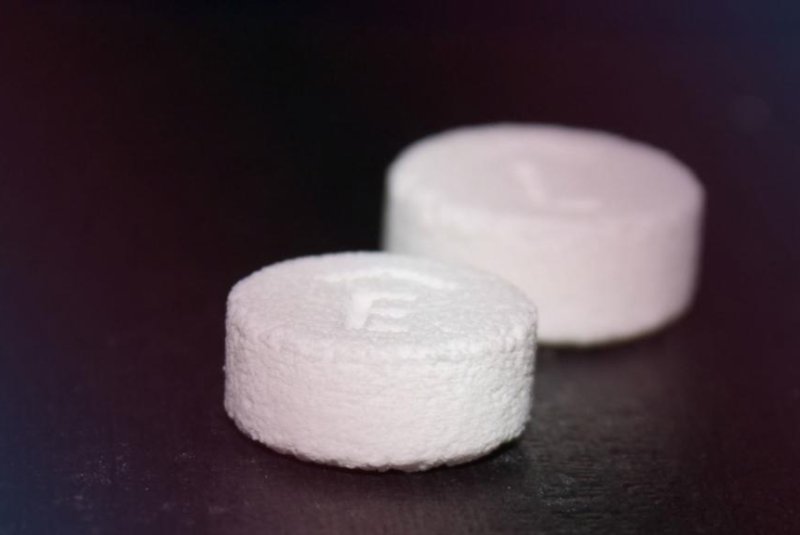Spritam is the first 3-D printed pill approved by the FDA. Photo by Aprecia Pharmaceuticals
BLUE ASH, Ohio, Aug. 4 (UPI) -- The U.S. Food and Drug Administration has approved the first 3-D printed pill, an epilepsy medication designed to be easier to swallow for adults with swallowing disorders and children.
Although 3-D printing has been used to create devices, implants, prosthetics and tissues for both research and medical procedures, this is the first drug using the technology that has been approved for use.
3-D printing drugs would allow doctors to tweak the individual dose of drugs for patients, rather than having to approximate amounts of pre-measured doses or take chances with a drug available in only one dosage.
"For the last 50 years we have manufactured tablets in factories and shipped them to hospitals," Dr. Mohamed Albed Alhnan, a lecturer in pharmaceutics at the University of Central Lancashire, told the BBC. "And for the first time this process means we can produce tablets much closer to the patient."
Spritam, manufactured by Aprecia Pharmaceuticals, uses a porous formulation the company calls ZipDose, that disintegrates with "a sip" of liquid, making it easier to take. The pill is being manufactured using 3-D printing because of the ability to layer the medication and more tightly pack higher doses into a uniform pill, with dosages tailored for individual patients.
"In my experience, patients and caregivers often have difficulty following a treatment regimen," said Dr. Marvin Rorick, a neurologist at Riverhills Neuroscience in Cincinnati, in a press release. "Whether they are dealing with a swallowing disorder or the daily struggle of getting a child to take his or her medication, adherence can be a challenge. Especially for children and seniors, having an option for patients to take their medication as prescribed is important to managing this disease."
The drug was approved for use in the treatment of partial onset seizures, myoclonic seizures and primary generalized tonic-clonic seizures in adults and children with epilepsy.















